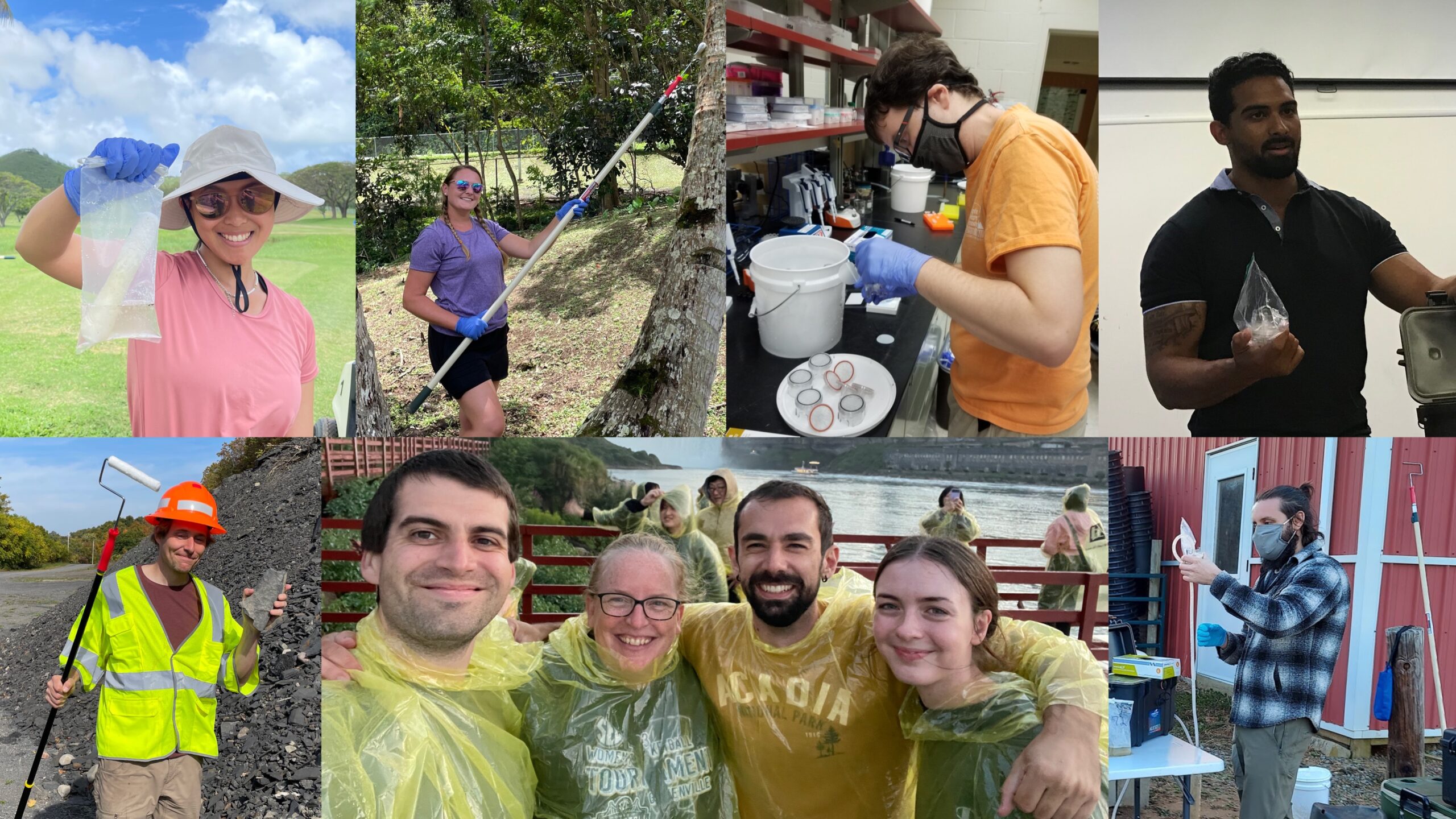About Us
The environmental DNA (eDNA) lab at Rutgers University is a research and extension program that seeks to innovate cutting-edge techniques in eDNA surveying; to support state, federal, non-profit, and industry eDNA survey needs; and to create data analyses tools that make the most of the power of eDNA surveys. We work across the freshwater, marine, and terrestrial realms often using experiences in these varied ecosystems as fuel for creating novel approaches to eDNA technology and analysis. Our lab engages with species-specific and community-level eDNA surveys. If you have ideas of how we may be able to help in your biodiversity survey efforts, please reach out.

Rutgers eDNA lab members throughout the years
History
The Rutgers eDNA lab originated as a very small collaboration between three faculty labs, and one PhD student (R. Valentin). We had the crazy idea that we could use water from on-farm wash stations to detect pest insects on vegetable farms and fruit orchards, and found that this technique (vat aggregation) worked better than we could have expected for pest surveillance. Our next big step forward happened over a random lunch date, where we collectively surmised that a paint roller could serve as a biggie-sized forensic swab and collect eDNA from any organism that uses tree trunks or other surfaces. From these beginnings we have branched out to freshwater and aquatic eDNA surveys, innovated other survey approaches to target a wide variety of terrestrial species, and expanded to include eDNA surveys for tracking biodiversity change through time. In the process, we have grown to claim a global reach, with the number of new folks in the eDNA lab growing accordingly.